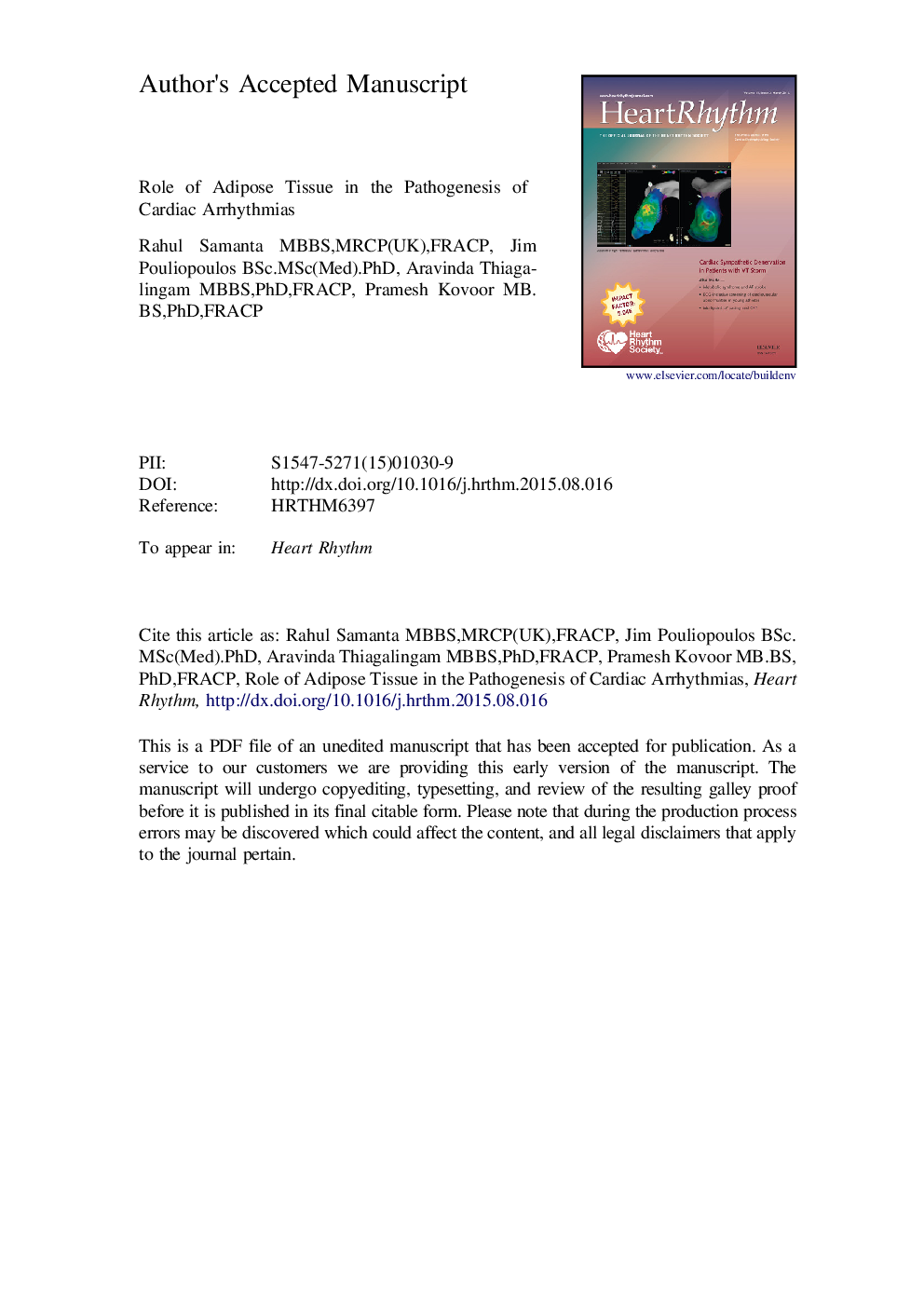| Article ID | Journal | Published Year | Pages | File Type |
|---|---|---|---|---|
| 5959311 | Heart Rhythm | 2016 | 34 Pages |
Abstract
Epicardial adipose tissue is present in normal healthy individuals. It is a unique fat depot that, under physiologic conditions, plays a cardioprotective role. However, excess epicardial adipose tissue has been shown to be associated with prevalence and severity of atrial fibrillation. In arrhythmogenic right ventricular cardiomyopathy and myotonic dystrophy, fibrofatty infiltration of the myocardium is associated with ventricular arrhythmias. In the ovine model of ischemic cardiomyopathy, the presence of intramyocardial adipose or lipomatous metaplasia has been associated with increased propensity to ventricular tachycardia. These observations suggest a role of adipose tissue in the pathogenesis of cardiac arrhythmias. In this article, we review the role of cardiac adipose tissue in various cardiac arrhythmias and discuss the possible pathophysiologic mechanisms.
Keywords
NaAFFATachyarrhythmiaARVCArrhythmiaMyocardial infarctionFree fatty acidMRIAdipose tissueEpicardial adipose tissueleft ventricleVentricular tachycardiaMagnetic resonance imagingcomputed tomographyEATLeft atriumAtrial fibrillationLipomatous metaplasiaArrhythmogenic right ventricular cardiomyopathyconnexin
Related Topics
Health Sciences
Medicine and Dentistry
Cardiology and Cardiovascular Medicine
Authors
Rahul MBBS, MRCP(UK), FRACP, Jim BSc, MSc(Med), PhD, Aravinda MBBS, PhD, FRACP, Pramesh MB BS, PhD, FRACP,
